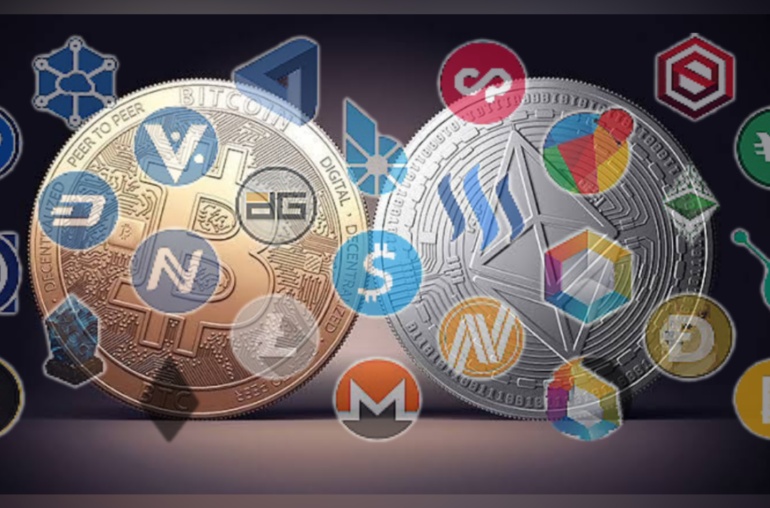Many top blockchains in the industry such as Ethereum (ETH) and Cardano (ADA) adopt the same single-chain approach. Single chains offer base platforms for development of decentralized applications (dApps). But this is different on the Polkadot network. Gavin Wood’s Polkadot network is a heterogeneous multi-chain platform with smart-contract functionalities.
In a few years of being launched, Polkadot network as a multi-chain framework and smart-contract platform has quickly become one of the most popular and biggest cryptocurrency blockchains throughout the industry.
Polkadot is the next-generation blockchain protocol that unlocks a wide range of real-world use cases. Here, you get a detailed introduction to the Polkadot Network, its strong characteristics, what makes the blockchain unique, and its native currency, DOT.
Related: What are the top 5 blockchain projects you should know?
Introduction to Polkadot Network
Polkadot is a blockchain platform created by the Web3 Foundation. Polkadot aims to solve the interoperability, composability, and scalability problems. These three problems have been hampering crypto and blockchain adoption over the years. The Web3 Foundation is a team of innovators with the mission of nurturing cutting-edge applications for decentralized web software protocols. Dr. Gavin Wood, the former Ethereum (ETH) co-founder, is the President of the Web3 Foundation and the founder of Polkadot Network. Other co-founders are Robert Habermeier and Peter Czaban.
Polkadot is a multi-chain platform designed in a manner that it can connect various blockchains into one large network. Being a sharded blockchain, it is able to do this while allowing the individual blockchains to process transactions in parallel and also exchange data (communicate) between chains without compromising security.
While having a blockchain is great, most projects cannot simply exist alone probably because they lack the resources to build one from scratch. This means that some crypto projects will be non-existent or won’t be functional until they can connect to an existing blockchain to access their features. This is where blockchains like Polkadot come into play.
Polkadot blockchain has been designed in such a way that it cannot provide any inherent application functionality on its own. Instead, Polkadot serves as the motherboard, formally called the “relay chain”. It is upon this relay chain that a significant number of validatable smaller chains or execution slots may be hosted side-by-side. These smaller chains or data structures that can connect to the Polkadot blockchain are dubbed parachains or “parallelized” chains.
Generally, Polkadot’s architecture consists of three core components: Relay Chain, Parachains, and Bridges. Polkadot also has four consensus roles namely Validator, Nominator, Collator, and Fishermen. The Relay Chain is regarded as the heart of Polkadot. This is because it is responsible for network security, consensus, and cross-chain interoperability. On the other hand, Bridges are said to be special blockchains that allow Polkadot shards to connect to and communicate with external networks like Ethereum (ETH) and Bitcoin (BTC).
Polkadot Core Functions
As a relay chain, Polkadot’s main function is to link other chains for shared security and interoperability with privacy guaranteed.
Substrate, a highly potent tool included in the Polkadot architecture, greatly simplifies the process of creating a blockchain from scratch. It contains the protocol connection points that are attached to the relay chain and is created to assist project teams in building up the exact blockchain they need. This substrate tool has two main advantages. First, it enables project teams to concentrate more on the value-added aspects of their product rather than going through the stress of creating the fundamental infrastructure of a blockchain project. Second, it allows startup teams with excellent ideas but lacking the necessary skills to assemble a network from scratch and access the blockchain world.
Furthermore, Polkadot handles network security and transaction validation, which is another advantage for developers. On the relay chain of the network, transactions are handled. This eases developers from having to create a safe method for transaction validation, allowing them to concentrate exclusively on their blockchain initiatives.
Here’s Why Polkadot is Different
As aforementioned, Polkadot is a scalable heterogeneous multi-chain platform, unlike most blockchains that adopt the single-chain approach. It uses a relay chain structure. This means that any two different blockchains can link to one another.
Polkadot allows for multiple chains within a single network by using “relay” nodes that connect multiple chains. The main benefit of this type of design is increased scalability because it allows for thousands or even millions of transactions per second rather than just thousands or tens of thousands like other projects such as Ethereum for example do today.
The majority of blockchains run independently of one another and on their own. For instance, cryptocurrencies like Cardano (ADA), Ethereum (ETH), and bitcoin (BTC) each have their blockchains. Decentralized applications (dApps) created on Ethereum and Cardano are currently unable to connect with one another.
Related: What is Blockchain Technology: Meaning, Types, and Use Cases
This is where Polkadot is most useful. Being a multichain network, it can connect many blockchains. It allows programmers to create blockchains that can communicate with every other blockchain in the Polkadot network.
Additionally, while it has become a norm for new projects to exist through a fork of an existing chain, Polkadot enables blockchains to upgrade themselves without the need to fork the chain. “These forkless upgrades are enacted through Polkadot’s transparent on-chain governance system. It also significantly reduces the risk associated with contentious hard forks—a severe barrier to entry for many organizations,” Polkadot stated.
According to Polkadot, it will be able to scale even further in the future with a planned feature known as nested relay chains. Nested relay chains will increase the number of shards that can be added to the network. On the whole, Polkadot is different as it allows for decentralized and participatory governance through the staking of DOT. This means invariably that the platform is governed by anyone who holds any amount of the DOT token.
About DOT Token
DOT is the native currency of the Polkadot Network. It is the 12th largest cryptocurrency by market capitalization, at the time of writing. DOT was first introduced in 2017 when Polkadot executed its first initial coin offering (ICO) event. But DOTs were distributed following the launch of the Polkadot genesis block which happened in May 2020.
According to data from Coinmarketcap at the time of writing, DOT has a circulating supply of 1,162,147,246 with its total supply at 1,288,570,916. During the bull run in 2021, DOT touched $55 per token in November 2021 which is its all-time high. Its market cap reads over $7.4 billion, at press time.
DOT token serves three distinct purposes namely governance, staking, and bonding. This entails that DOT holders can propose a change to the protocol or vote on existing improvement proposals. Since the Polkadot network operates with the Nominated Proof of Stake consensus mechanism (NPOS), DOT holders can stake their assets to receive incentives. To add new parachains to the Polkadot relay chain, the DOT token is used for the bonding.
Conclusion
The Polkadot (DOT) platform is a unique solution and one of the most brilliant technological and commercial breakthroughs in the crypto and blockchain industry. Polkadot’s founders believe that their protocol can be used for a wide variety of applications in finance, media, social networks, and more. This has been proven to be valid.
With an average yearly payout of 10%, staking DOTs has been a good return on investment(ROI) for investors. The fact that DOT is also used as the protocol’s governance token as well as for staking to protect the network or create new chains suggests that the project wants to encourage adoption by rewarding contributors. Not financial advice.
In light of the numerous benefits the Polkadot platform offers for businesses, programmers, and investors, interest in Polkadot may continue to grow. More so, the Polkadot’s stable and dependable network makes the project’s future looks promising.
Read also: What is Avalanche Blockchain?
Credit: Ndianabasi Tom
A crypto journalist and content writer who has been talking about cryptocurrency and blockchain technology since 2018, Ndianabasi is a Writer at Crypto Asset Buyer (CAB).
Discover more from Crypto Asset Buyer
Subscribe to get the latest posts sent to your email.




